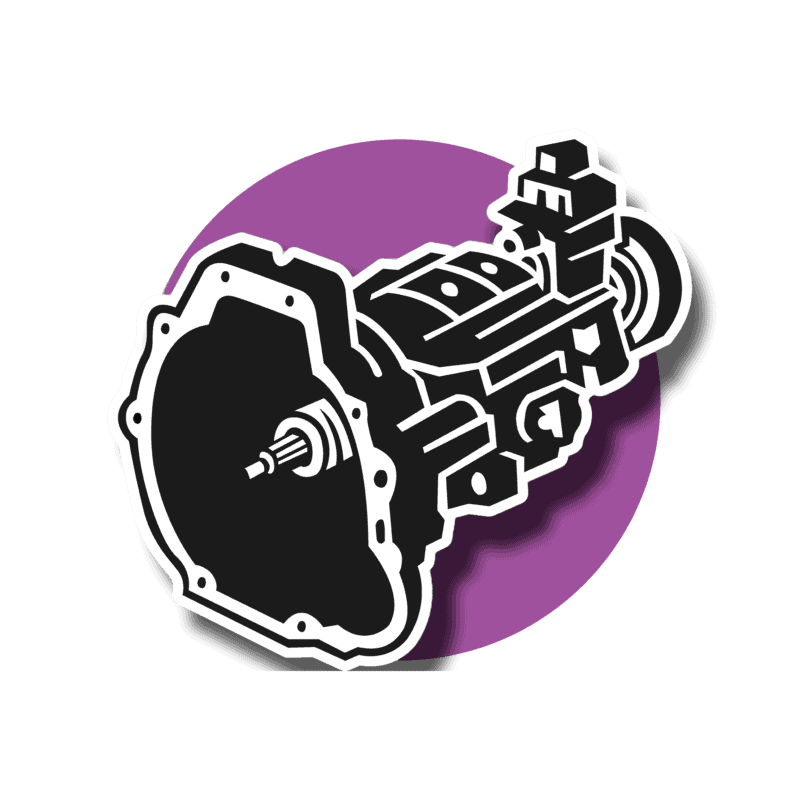Report Explanation
Got questions about your oil report? Mystery solved right here. Read on to see what the results mean.
Gas/Diesel Engine

Aircraft Engine

Transmission
Transmission

Industrial

Aluminum: Pistons, bearings, the case (heads & blocks)
Chromium: Rings, trace element in steel
Iron: Cylinders, rotating shafts, valve train, any steel part sharing the oil
Copper: Bushings, bearings, oil coolers, any bronze or brass part, aftermarket additives
Lead: Bearings, leaded gas, octane booster, aftermarket additives
Tin: Bearings, bronze parts
Nickel: Trace element in steel, plating on some cylinder types
Silver: Bearings, solder
Titanium: Some intake valves & connecting rods, aftermarket parts, oil additive
Zinc: Brass parts (with copper)
Potassium: Antifreeze, aftermarket additives, flux compound (with aluminum)
Sodium: Antifreeze, oil additive, sea water in marine engines
Silicon: Airborne dirt escaping air filtration, sealers, gaskets, lubes, antifreeze inhibitor, oil additive
Molybdenum: Anti-wear additive, coating on some types of rings
Manganese: Trace element, additive in some gasoline
Boron: Anti-wear additive, antifreeze inhibitor
Calcium: Detergent/dispersant additive
Magnesium: Detergent/dispersant additive
Phosphorus: Anti-wear additive
Zinc: Anti-wear additive
Barium: Detergent/dispersant additive
Viscosity: Viscosity looks at the grade of the oil. If fuel/solvent is present, the viscosity will often be low. A high viscosity can be from oxidation or excess soot, or from an aftermarket additive
Flashpoint: The flashpoint checks for fuel/solvent contamination. When fuel/solvents are present, the flashpoint reads low
Fuel %: Indicates the amount of volatile fuel dilution in the oil
Antifreeze %: Indicates the amount of coolant in the oil. A question mark means we found possible traces of coolant, but not enough to definitively say it’s there
Water %: Indicates the amount of moisture found in the oil
Insolubles %: Solids present in the oil; typically free carbon from oil oxidation, along with blow-by past the rings
Aluminum: Pistons, piston pin plugs, bearings, and the case
Chromium: Rings, replacement cylinders, valve stems, steel alloy
Iron: Cylinders, rotating shafts, valve train, any steel part sharing the oil
Copper: Bushings, bearings, oil coolers, any bronze or brass part
Lead: 100 LL blow-by, bearings (but lead from bearings is often masked by blow-by)
Tin: Bearings, bronze parts (with copper), anti-wear coating
Nickel: Valve guides, replacement cylinders
Silver: Some bearings
Zinc: Component of brass (with copper)
Silicon: Airborne dirt escaping air filtration, silicone sealers, gaskets and lubes
Sodium: Antifreeze, brine-filled valves
Calcium: Additive typically found in Camguard
Phosphorus: Oil additive
Viscosity: Viscosity looks at the grade of the oil. If fuel/solvent is present, the viscosity will often be low. A high viscosity can be from oxidation or excess soot, or from an aftermarket additive
Flashpoint: The flashpoint checks for fuel/solvent contamination. When fuel/solvents are present, the flashpoint reads low
Fuel %: Indicates the amount of volatile fuel dilution in the oil
Antifreeze %: Indicates the amount of coolant in the oil. A question mark means we found possible traces of coolant, but not enough to definitively say it’s there
Water %: Indicates the amount of moisture found in the oil
Insolubles %: Solids present in the oil; typically free carbon from oil oxidation, along with blow-by past the rings
Aluminum: Housing, oil pump, bearings, gear & pump vanes
Chromium: Ball & roller bearings, alloy in steel parts like gears
Iron: Gears, bearings, shafts, clutch plates, sometimes the case
Copper: Bronze bushings, oil cooler oxides, clutch plates, fittings
Lead: Gear marking compound, alloy of bronze
Tin: Bearing cages, alloy of bronze
Nickel: Clutch bands, steel alloy
Silver: Some friction bearings, Allison needle bearings
Manganese: Steel alloy
Titanium: Trace wear metal
Potassium: Antifreeze
Silicon: Dirt, sealers, gaskets, spray lubricants, antifreeze
Sodium: Antifreeze
Boron
Calcium
Magnesium
Phosphorus
Zinc
Barium
Viscosity: Viscosity looks at the grade of the oil. If a solvent is present, or if the oil has been exposed to excessive heat, a transmission’s viscosity will often be low
Flashpoint: The flashpoint checks for solvent contamination. When solvents are present, the flashpoint reads low
Antifreeze %: Indicates the amount of coolant in the oil. A question mark means we found possible traces of coolant, but not enough to definitively say it’s there
Water %: Indicates the amount of moisture found in the oil
Insolubles %: These are solids present in the oil
Aluminum: Pump vanes, pistons, valves, other aluminum parts
Chromium: Ball & roller bearings, hydraulic rams, trace element in steel
Iron: Gears, any steel parts including rotating shafts and valves
Copper: Bronze and brass parts, bushings, valves, oil cooler
Lead: Friction bearings, solder, component in bronze wear (with copper)
Tin: Bearings, component in bronze, anti-wear coatings
Boron: May show coolant contamination
Silicon: Dirt, sealers, gaskets, spray lubricants, antifreeze, anti-foam additive
Sodium: Antifreeze, contamination from other sources
Molybdenum
Manganese
Boron
Calcium
Magnesium
Phosphorus
Zinc
Barium
Viscosity: Viscosity looks at the grade of the oil
Flashpoint: The flashpoint checks for solvent and moisture contamination
Water %: Indicates the amount of moisture found in the oil
Insolubles %: Solid materials present in the oil; typically these are free carbon from oil oxidation, or they may be dirt contamination

